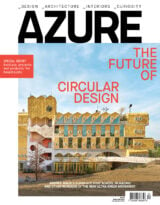
Call it the Kusama effect. From the larger-than-life Yayoi Kusama look-alikes installed at Louis Vuitton stores this past winter to her Instagram-friendly Infinity Mirror Rooms, the Japanese artist knows how to draw a crowd. Now, her work is one of six vibrant glass mosaics installed at Grand Central Madison, a new 65,000-square-metre Long Island Rail Road station located below Grand Central Terminal (and one of North America’s largest transit infrastructure projects).

Both Kusama and German-born American artist Kiki Smith were hand-picked for the project following an open call and proposal review by a panel of arts professionals and community representatives. Their works span four arched alcoves on the mezzanine level and two long sites on the Madison concourse — strategic locations selected by the Arts & Design agency of the Metropolitan Transportation Authority (MTA) in close collaboration with Aecom, which designed the station.

Chosen for her unique ability to spark joy, Kusama extended her My Eternal Soul series of paintings with A Message of Love, Directly from My Heart unto the Universe. Replete with anthropomorphic suns in vivid hues, the free-flowing mural evokes the movement of transit users through the terminal. Meanwhile, Smith’s landscapes offer a soothing counterpoint: Four showcase the flora and fauna of Long Island, while the fifth depicts the East River.

“The artist’s vision is where the magic is,” says Sandra Bloodworth, director of MTA Arts & Design. “They are mindful that they’re creating work in the public realm rather than a gallery setting, but the work they proposed is very much in keeping with their existing portfolios.”


Such big-name artists benefit from a terminal that’s ready to handle serious foot traffic. But with any luck, their artworks will also call attention to the lesser-known but equally important projects that enliven the entire MTA system. From permanent works (including a dynamic tile wall by Sol LeWitt at 59th Street–Columbus Circle station and a more recent installation by Nick Cave) to digital art and photography, the MTA has commissioned over 370 artworks since 1985. “We might have a small project tucked in the heart of the Bronx that speaks so much to our customers. But that didn’t get a two-page spread in the New York Times,” says Bloodworth.

For the millions of New Yorkers who rely on public transit, these artworks — both the high-profile spectacles and the smaller hidden gems — become landmarks that establish a sense of place, breaking up the monotony of subterranean spaces.
Eye-catching mosaics turn a New York City train terminal into an unexpected exhibition space.
